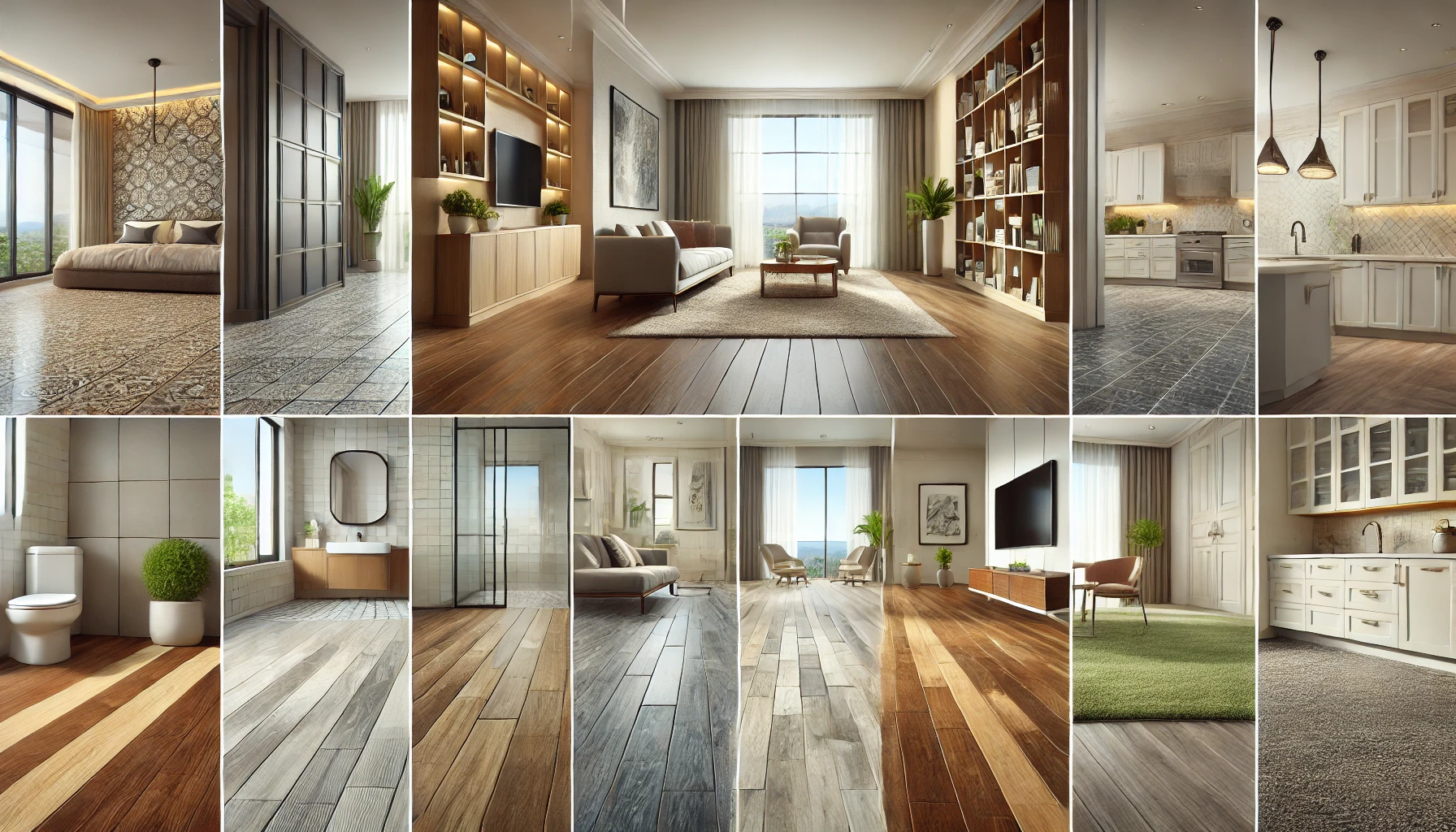Floor | Types, Materials, and Design
Flooring is a fundamental aspect of any building’s architecture, playing a crucial role in both the functionality and aesthetic appeal of a space. From residential homes to commercial buildings, the choice of flooring can significantly impact the ambiance, durability, and maintenance requirements of an environment.
Selecting the right flooring involves considering a variety of factors, including material durability, ease of maintenance, cost, and the overall design vision for the space. The market offers a diverse range of flooring options, each with its unique set of characteristics and benefits. Understanding these options can help in making an informed decision that balances aesthetics and practicality.

Categories
Related Terms
Types of Flooring
Hardwood Flooring
Hardwood flooring is celebrated for its natural beauty and durability. It comes in various types, including oak, maple, and cherry, each offering distinct grain patterns and colors. Hardwood floors add warmth and elegance to any room and are highly durable, making them a popular choice for high-traffic areas. They can be sanded and refinished multiple times, which extends their lifespan significantly.
Laminate Flooring
Laminate flooring is a cost-effective alternative to hardwood, offering a similar appearance without the high price tag. It consists of a photographic layer that mimics the look of wood, stone, or tile, topped with a protective layer. Laminate is easy to install and maintain, resistant to scratches and stains, and ideal for areas with high foot traffic.
Tile Flooring
Tile flooring is versatile and durable, available in materials like ceramic, porcelain, and natural stone. Ceramic and porcelain tiles are known for their water resistance, making them ideal for bathrooms and kitchens. Natural stone tiles, such as marble and granite, offer a luxurious look and are extremely durable. Tiles come in various shapes, sizes, and colors, allowing for creative and unique designs.
Vinyl Flooring
Vinyl flooring is known for its durability and water resistance, making it suitable for a variety of spaces, including kitchens and bathrooms. It is available in sheets, tiles, or planks and can mimic the appearance of natural materials like wood or stone. Vinyl is easy to install, maintain, and provides a comfortable underfoot feel, making it a popular choice for residential and commercial use.
Carpet Flooring
Carpet flooring offers warmth and comfort, ideal for bedrooms and living areas. It comes in a variety of fibers, including wool, nylon, and polyester, each providing different levels of durability and softness. Carpeting can also help with sound insulation and is available in numerous colors and textures to suit any interior design style.
Flooring Materials
Natural Materials
Natural materials such as wood, stone, and bamboo are prized for their unique aesthetics and environmental benefits. Hardwood floors provide a classic, timeless look and are highly durable. Stone flooring, including options like marble, granite, and slate, offers exceptional durability and a luxurious appearance. Bamboo is an eco-friendly alternative, known for its hardness and resistance to moisture.
Synthetic Materials
Synthetic flooring materials include vinyl, laminate, and linoleum. Vinyl is praised for its resilience and versatility, available in various styles that can mimic natural materials. Laminate provides a durable and affordable alternative to wood and stone. Linoleum, made from natural and renewable materials, is both eco-friendly and durable, offering resistance to water and wear.
Hybrid Materials
Hybrid materials, such as engineered wood and composite materials, combine the best features of natural and synthetic flooring. Engineered wood consists of a real wood veneer atop a plywood or high-density fiberboard (HDF) core, providing the look of hardwood with added stability. Composite materials often incorporate recycled content, offering a sustainable and durable flooring solution.
Flooring Design
Aesthetic Considerations
The choice of flooring can dramatically influence the visual appeal of a space. Colors, patterns, and textures all play a role in the overall design. Light-colored floors can make a room feel more spacious, while dark floors add a sense of intimacy and warmth. Patterns such as herringbone or checkerboard can add visual interest and sophistication.
Functional Considerations
Beyond aesthetics, functionality is a key consideration when selecting flooring. Durability, maintenance requirements, and comfort are essential factors. High-traffic areas benefit from durable materials like tile or hardwood, while comfort may be prioritized in living areas with carpet or vinyl flooring. Ease of cleaning and resistance to stains and scratches are also crucial for long-term satisfaction.
Current Trends in Flooring Design
Current trends in flooring design emphasize sustainability, with a growing interest in eco-friendly materials and production methods. Reclaimed wood and bamboo are popular choices for their environmental benefits. Additionally, mixed materials and textures are trending, with homeowners and designers combining different flooring types to create unique and personalized spaces. Patterns and bold colors are also making a comeback, adding a dynamic element to contemporary interiors.
Choosing the Right Flooring
Assessing Needs
Choosing the right flooring starts with assessing the specific needs of each room. Consider the level of foot traffic, exposure to moisture, and the desired ambiance. For example, kitchens and bathrooms require water-resistant flooring like tile or vinyl, while living rooms may benefit from the warmth and comfort of carpet or hardwood.
Budget Considerations
Budget is a critical factor in the flooring selection process. It’s important to balance cost with quality and durability. While natural materials like hardwood and stone can be more expensive, their longevity and timeless appeal may justify the investment. Synthetic and hybrid materials often provide a more affordable option without compromising on style or functionality.
Conclusion
Summary
Selecting the right flooring involves considering a variety of factors, including material, design, and functionality. From the elegance of hardwood to the versatility of vinyl, each flooring type offers unique benefits and characteristics.
Final Thoughts
Making an informed decision on flooring can enhance the beauty, comfort, and value of any space. By understanding the different types, materials, and design options available, you can choose the perfect flooring to suit your needs and preferences.
